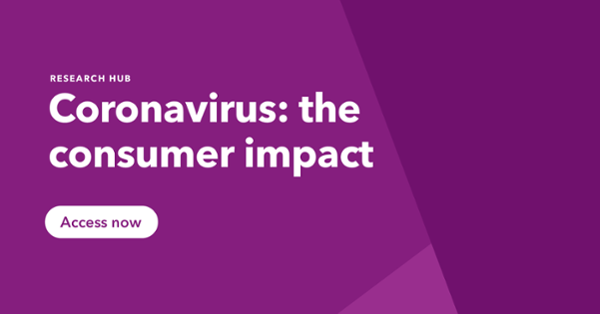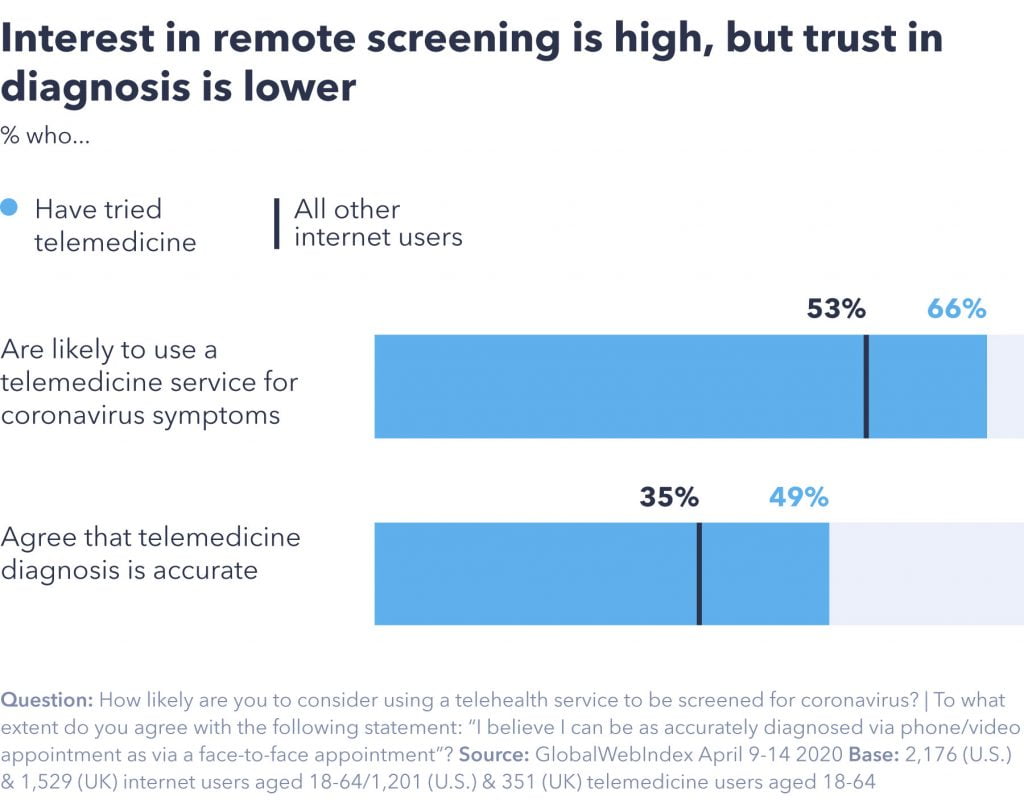Healthcare systems in virtually every country worldwide are facing the challenge of “flattening the curve” in the coronavirus outbreak. This will reduce its spread, easing the burden on hospitals and medical professionals, ensuring everyone can access the care they need.
One important tool in this battle is telehealth (also known as telemedicine or virtual healthcare), which is healthcare that’s provided remotely, whether by phone call, video call, or text message. To enable it, the U.S. Department of Health announced that HIPAA, the regulation that oversees security of health data, will be relaxed for the duration of this public health emergency. Similar moves have been enforced in other countries to reduce the contagion risk between doctors and patients.
This means telehealth has gone from a nice-to-have to a must-have in a short period of time.
But it doesn’t mean barriers to it have disappeared. As well as the technological, infrastructural, and financial hurdles, adoption of it depends on a given person’s internet habits and treatment preferences.
It’s sometimes assumed that since smartphone adoption is pretty much universal, potential access to telehealth is too. Our recent research shows that while a virtual healthcare revolution may be close, all involved have to make sure everyone can have equal access.
Telehealth is hitting the ground running – for some.
The services put in place to screen coronavirus remotely have already made an impact. 8% in the U.S/UK have used one – almost as many the 11% that have used them for mental health treatment at any point.
The 8% figure is a solid start, though the skew toward younger age groups gives an indication of how some more clinically important groups may be missed. 14% of millennials (aged 24-37) have used the service, compared to just 1% of baby boomers (aged 57-64).
Crucially, just over half say they would be likely to use such a service in the future, so it’s a figure that’s likely to grow and become many people’s first use of the technology.
Previous experience of telehealth helps convince people to try it out:
66% of those who have used it in the past would use a similar service to identify coronavirus symptoms.
Older age groups are less likely to try a coronavirus telehealth service. The figure falls to 42% for 55-64s and 45% for 45-54s. Given the historic benchmarks for telehealth, these are still pretty high numbers.
But it underlines that adoption of virtual healthcare, even in these times, still depends on a baseline digital fluency that means not all who need it may be able to use it effectively.
Another hurdle for the technology to overcome is how difficult it is to replace the personal touch from a face-to-face consultation. We carried out research into this in August 2019, which gives us a good idea of what attitudes to telehealth were like before COVID-19.
The most pertinent finding to the current situation is that in-person appointments were the preferred option for every single age group. 62% of millennials preferred to have future health appointments in person, for example, compared to 52% by video call.
Only 28% wanted to communicate with their doctor via social media or messaging apps – lower than other options that are typically less important to their online lives, including email. Interest in video calling dropped to 34% among baby boomers.
Two things are particularly relevant to the technology’s long-term future. One is that telehealth depends on digital fluency – this can’t be ignored when building new tools. The second is that, despite this reliance on digital fluency, communication preferences to do with health are still somewhat different from established internet habits.
Everyone, regardless of age or social media adoption, wants detailed consultations, even remotely. It can’t be taken for granted that telehealth can be entirely layered on top of the most commonly used social media or messaging platforms, as it misses some of the subtleties of what patients look for.
With that in mind, it’s not surprising there’s some reservation about how accurate remote healthcare can be. 35% think telehealth is as effective as in-person diagnosis, but again prior exposure to telehealth makes a difference here, as it rises to 46% among that group.
Circumstances have forced telehealth to scale up at a rapid pace – but attitudes about it will be harder to shift.
Telehealth will be about more than screening symptoms.
Throughout our research into COVID-19, we’ve observed that it’s a double-sided health crisis. There’s the virus, which requires quarantine to reduce transmission, and there’s the mental health crisis that results from those measures.
This was keenly felt in countries hit by the SARS epidemic, and in January the National Health Commission of China issued guidance on leading interventions into the secondary effects on mental health. Countries with previous experience are well aware of how mental health can suffer during a viral outbreak.

This means applications of virtual healthcare during the COVID-19 crisis have to go beyond physical symptoms and address mental health.
While 8% have used telehealth to screen for coronavirus symptoms, the leading category for usage at any time is mental health. With less need for physical examination, mental health is one field of medicine that can be transported to virtual channels with relative ease.
For the next few months, telehealth will likely need to be concentrated on two fronts. As well as the first line of screening for coronavirus symptoms, it will also need to support people that have undergone significant psychological disruption.
Not just older age groups feel inhibited.
While older age groups may be underserved by telehealth, there are other groups that need more persuasion to adopt virtual health care – some of which are quite surprising.
One is female internet users. 46% of them would try a telehealth service, compared to 60% of men. This is in line with the kind of gender bias in technology our research usually observes, where male internet users are more likely to adopt new technology.
While there may be other factors at work here too, it’s something to address when sculpting effective virtual health systems and building awareness of them.
Another thing to consider is mental health. While coronavirus has an impact on mental health, the opposite is also true – at least when it comes to reaching a diagnosis.
Those who feel isolated by lockdown, or have worsened mental health as a result of it, may feel more inhibited from using screening services.
Only 47% of those who say their mental health has been greatly worsened by the crisis would use a telehealth service. Again, there’s a potential issue where those in need of virtual healthcare are less likely to use it.
Feeling detached from the world at large may make people less likely to use telehealth tools, and it’s another sign of how important it is to recreate in-person interaction, even if it happens virtually.
A good start, but there’s more to come.
It’s almost certain coronavirus will prove a game-changer for remote healthcare. If nothing else, the widespread relaxing of legislation will see to that.
The important part is what comes next, and ensuring that virtual health services are built to serve as many as possible.
Many tools have had to be built in a very short period of time – one UK provider, Accurx, built a video-calling service in 24 hours – so more work will be needed to ensure they can be used by the most in-need groups, and not just the most digitally savvy.
Our research also underlines how important it is to build awareness of these services to those who may be unfamiliar with them. Beyond demographics, those whose mental health may be suffering must be zeroed in on to encourage them to reach out remotely.
There are undoubtedly tradeoffs that have to be made to ensure telehealth quickly reaches scale to battle coronavirus, but more work needs to be done to make sure no-one is left behind.

